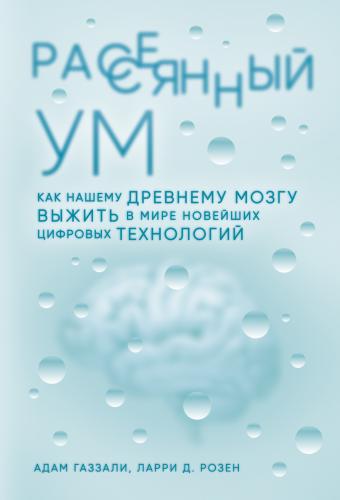12
Harris Interactive, “Americans Work on Their Vacation: Half of Those Vacationing Will Work on Their Vacation, Including Checking Emails, Voicemails, and Taking Calls,” July 28, 2011, http://www.harrisinteractive.com/NewsRoom/HarrisPolls/tabid/447/mid/1508/articleId/843/ctl/ReadCustom%20Default/Default.aspx.
13
Y. Hwang, H. Kim, and S. H. Jeong, “Why Do Media Users Multitask? Motives for General, Medium-Specific, and Content-Specific Types of Multitasking,” Computers in Human Behavior 36 (2014): 542–548; S. Chinchanachokchai, B. R. Duff, and S. Sar, “The Effect of Multitasking on Time Perception, Enjoyment, and Ad Evaluation,” Computers in Human Behavior 45 (2015): 185–191.
14
L. Yeykelis, J. J. Cummings, and B. Reeves, “Multitasking on a Single Device: Arousal and the Frequency, Anticipation, and Prediction of Switching between Media Content on a Computer,” Journal of Communication 64, no. 1 (2014): 167–192.
15
B. C. Wittmann, N. Bunzeck, R. J. Dolan, and E. Duzel, “Anticipation of Novelty Recruits Reward System and Hippocampus While Promoting Recollection,” NeuroImage 38, no. 1 (2007): 194–202.
16
O. Hikosaka, S. Yamamoto, M. Yasuda, and H. F. Kim, “Why Skill Matters,” Trends in Cognitive Sciences, 17, no. 9 (2013): 434–441.
17
T. T. Hills, “Animal Foraging and the Evolution of Goal-Directed Cognition,” Cognitive Science 30, no. 1 (2006): 3–41.
18
R. A. Wise, “Dopamine, Learning, and Motivation,” Nature Reviews Neuroscience 5, no. 6 (2004): 483–494; M. van Schouwenburg, E. Aarts, and R. Cools, “Dopaminergic Modulation of Cognitive Control: Distinct Roles for the Prefrontal Cortex and the Basal Ganglia,” Current Pharmaceutical Design 16, no. 18 (2010): 2026–2032; M. Wang, S. Vijayraghavan, and P. S. Goldman-Rakic, “Selective D2 Receptor Actions on the Functional Circuitry of Working Memory,” Science 303 (2004): 853–856; M. Watanabe, T. Kodama, and K. Hikosaka, “Increase of Extracellular Dopamine in Primate Prefrontal Cortex During a Working Memory Task,” Journal of Neurophysiology 78, no. 5 (1997): 2795–2798.
19
E. S. Bromberg-Martin and O. Hikosaka, “Midbrain Dopamine Neurons Signal Preference for Advance Information about Upcoming Rewards,” Neuron 63, no. 1 (2009): 119–126.
20
T. T. Hills, “Animal Foraging.”
21
P. Pirolli and S. Card, “Information Foraging,” Psychological Review 106, no. 4 (1999): 643.
22
E. L. Charnov, “Optimal Foraging: The Marginal Value Theorem,” Theoretical Population Biology 9, no. 2 (1976): 129–136.
23
M. H. Cassini, A. Kacelnik, and E. T. Segura, “The Tale of the Screaming Hairy Armadillo, the Guinea Pig, and the Marginal Value Theorem,” Animal Behavior 39, no. 6 (1990: 1030–1050; R. J. Cowie, “Optimal Foraging in the Great Tits (Parus Major),” Nature 268 (1977): 137–139.
24
Pirolli and Card, “Information Foraging”; T. Hills, P. M. Todd, and R. L. Goldstone, “Priming and Conservation between Spatial and Cognitive Search,” in Proceedings of the 29th Annual Cognitive Science Society (Austin: Cognitive Science Society, 2007), 359–364; P. E. Sandstrom, “An Optimal Foraging Approach to Information Seeking and Use,” Library Quarterly (1994): 414–449; M. Dwairy, A. C. Dowell, and J. C. Stahl, “The Application of Foraging Theory to the Information Searching Behavior of General Practitioners,” BMC Family Practice, 12, no. 1 (2011): 90.
25
R. Marois and J. Ivanoff, “Capacity Limits of Information Processing in the Brain,” Trends in Cognitive Sciences 9, no. 6 (2005): 296–305.
26
J. M. Fuster, “Upper Processing Stages of the Perception-Action Cycle,” Trends in Cognitive Sciences 8, no. 4 (2004): 143–145.
27
Термин «цикл восприятия/действия» был введен и популяризован Хоакином Фустером, но концепция Упоминалась несколькими другими учеными, начиная с 1950 года. See J. M. Fuster, The Prefrontal Cortex, 2nd ed. (New York: Raven Press, 1989); J. M. Fuster, Cortex and Mind: Unifying Cognition (Oxford: Oxford University Press, 2003).
28
Подколенный рефлекс можно точнее описать как рефлекс ощущения/действия, так как головной мозг не принимает участия в процессе.
29
F. L. Coolidge and T. Wynn, “Executive Functions of the Frontal Lobes and the Evolutionary Ascendancy of Homo Sapiens,” Cambridge Archeological Journal 11, no. 2 (2001): 255–260.
30
N. J. Emery and N. S. Clayton, “The Mentality of Crows: Convergent Evolution of Intelligence in Corvids and Apes,” Science 306, no. 5703 (2004): 1903–1907.
31
Quoted material in this paragraph is from Charles Sabine, “Senses Helped Animals Survive the Tsunami,” NBC News with Brian Williams, http://www.nbcnews.com/id/6795562/ns/nbc_nightly_news_with_brian_williams/t/senses-helped-animals-survive-tsunami.
32
National Highway Traffic Safety Administration and Virginia Tech Transportation Institute, “Breakthrough Research on Real-World Driver Behavior Released,” April 20, 2006, http://www.nhtsa.gov/Driving+Safety/Distracted+Driving+at+Distraction.gov/Breakthrough+Research+on+Real-World+Driver+Behavior+Released.
33
William
